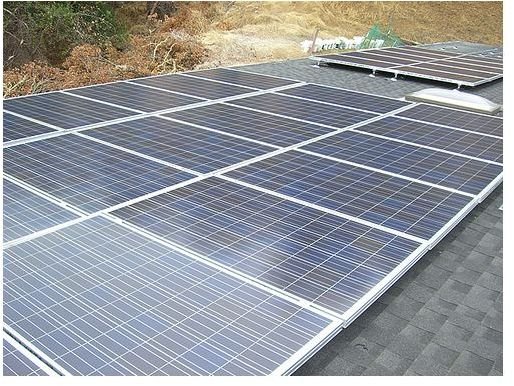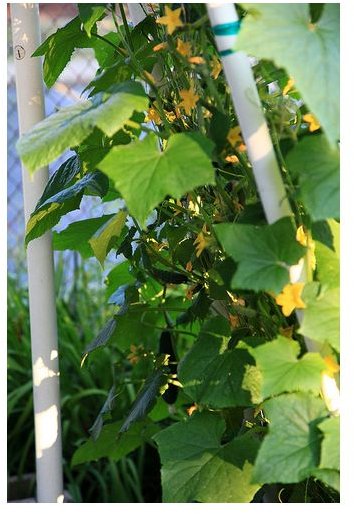Urban Homesteading & Gardening Guide
Urban Self Sufficiency
Just because you live in the city doesn’t mean you can’t become more self-sufficient, self-reliant and

ecologically friendly. Every year, more people look to grow their own vegetables and store their harvest for the winter, while becoming less reliant on utilities and other sources of pollution, energy waste and greenhouse gases. In this urban homesteading and gardening guide, take a look at just a few of the articles we have that help you reduce your carbon footprint while living in the city or suburbs.
Urban Homesteading: Self-Sufficiency on a City Lot
Homesteading in the city? Absolutely. Maybe you won’t be going off-grid, but you can make a difference and reduce your reliance on energy wasting, pollution producing methods of living. Between growing some or all of your own food, harvesting rain water and using alternative forms of energy production, you can turn your urban home into an urban homestead.
Planning Your Urban Vegetable and Herb Garden
Have you got a 10 by 30 foot plot of grass that’s just soaking up water and sunlight? Did you know that’s sufficient space to grow enough food for a family of four? Even if you don’t have just one spot that’s big enough, you can put several spaces together to give yourself enough space. This guide on planning your urban vegetable and herb garden gets you started.
Urban Homesteading: Alternative Energy - Affordable Solar Power
Affordable solar power might sound like an oxymoron, but most owners of solar power systems recoup their investment in seven to ten years. You may think that’s a long time, but in the long run, it makes you more self-reliant and gives you some buffer against power outages.
Urban Gardening with Children
Teaching the kids about gardening gives them a head start on becoming self-sufficient. When children learn about gardening and enjoy it, they are more likely to choose this type of lifestyle when they are older. Select fast maturing plants like radishes for a quick result, and a few things kids will love to see growing like gourds and pumpkins just for fun.
Creating a High Yield Urban Garden
Getting the most out of your urban garden maximizes your self-sufficiency. Learn about companion planting, sequence planting and containers, planters and baskets. When the lettuce goes leggy on you in July, pull it up and put in some early tomatoes, carrots or start those fall vegetables. Maximizing your garden is about smart gardening and making the best use of your space.
Water Catchment Systems: Using Rain barrels to Recycle Water
Every garden needs water and if you live in a city or suburb, chances are pretty good you pay a premium price for your water. Why pay for water for the garden? You can conserve, store and use water for free if you collect what falls from the sky. Rain barrels store water and when you need it, just tap in and use it without paying for it. Just 1/4 inch of rain on your roof is probably more than 150 gallons of water.
Ideas for Gardening on a Balcony or Rooftop
Can you really grow vegetables on your balcony, patio or rooftop? Yes you can and it isn’t about square footage, but all about maximizing the space you have and using it to your advantage. Choosing the right containers and the plants you like are the first step.
Guide to Everything About Gardening
Books have been written, courses taught and seed catalogs abound. You don’t need any of those to get started with urban gardening. This comprehensive Bright Hub compilation to everything you need to know about starting, growing and maintaining a garden from year to year will help you attain some self-sufficiency in your urban homestead.
Ways to Earn Money While Homesteading
You can earn money while homesteading and have enough to live on without feeling like a pauper. Here’s some ways rural homesteaders make money from their off-the-grid, self-sufficient lifestyles. While not all are applicable to the city dweller, some of these methods of earning will work no matter where you live.
Getting started in gardening is exciting. You’ve got seed catalogs and some space with nothing but grass in it and plenty of sunlight. Here’s how to turn that sunny patch of grass into a garden that produces vegetables you can eat, from summer through fall and even into winter. Start with site preparation, plant your vegetables and reap the harvest.
Soil bags add space for gardening where you don’t have any. A “bag” isn’t actually necessary and you can create a soil bag garden indoors or out in just about any empty space, as long there is sufficient light. Use soil bag gardens to grow vegetables for several meals and add more green to your living.
Organic Pest Control for the Home Garden
Those pesky bugs. They get in the house, they invade our space and the big question is how do you keep them under control? Indoors and out, the sprays and pesticides spell death for bugs, but don’t do us humans any good either. Learn more about using eco-friendly ways of controlling insects and other annoying critters.
Cold frames let you get a head start on the season in the spring and extend the season in the fall. They protect plants from harsh temperatures, keeping conditions inside the frame as much as twenty degrees warmer than the outside ambient temperatures - much like a greenhouse does. You can build your own from recycled materials to make your miniature greenhouse greener.
The Best Soil Mixes for Container Gardening
If you do your gardening either partially or fully in containers, the mix of soil and other components you use is important. The best mixes for herbs and other vegetables include organic matter, sand and pH balancing agents. Learn about fertilizing, how much to use and what works best.
Vegetable Gardens for Apartment Living
Apartment living isn’t necessarily the easiest way to start homesteading, but there are definite possibilities for growing a few of your own vegetables in containers. Get creative with your pots, start some sprouts or even grow some mushrooms to start your own apartment homestead.
References
- Photo of Urban Garden by Gardener41 at Flickr.com
- Photo of Solar Panels by Dave Dugdale at Flickr.com
